 Football is a sport that is linked with tragedy in so many ways. It is, and has always been, a form of escapism, allowing people to get away from the drudge of their daily life in favour of doing something that matters enormously and yet doesn’t matter at all.
Football is a sport that is linked with tragedy in so many ways. It is, and has always been, a form of escapism, allowing people to get away from the drudge of their daily life in favour of doing something that matters enormously and yet doesn’t matter at all.
It’s perhaps best summed up by Arrigo Sacchi, who called it “the most important of the unimportant things in life”. We all know that football results don’t really matter, but we also know that we give ourselves over to the game so completely that they can often feel as though they matter more than anything.
Plenty of people become so obsessed with the slings and arrows of outrageous fortune that their club suffers during the course of a campaign that their entire mood can shift with the wins and losses. When it matters, though, football is extremely good at understand the important things. Bill Shankly once said, “Some people think football is a matter of life and death. I assure you, it’s much more serious than that”.
Yet we know that that isn’t really true. So how do teams keep going when tragedy strikes? How much of a difference to a team’s performance does the unthinkable happening actually make?
What We Mean By ‘Tragedy’
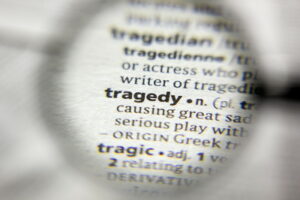 It’s important to outline the sort of thing that that we’re thinking about, given the fact that some people find tragedies were others simply find examples of misfortune. Whilst it might well seem to be a ‘tragedy’ if a team’s star player gets injured during an important spell of matches, it isn’t really enough to warrant people taking time off work or mourning for weeks.
It’s important to outline the sort of thing that that we’re thinking about, given the fact that some people find tragedies were others simply find examples of misfortune. Whilst it might well seem to be a ‘tragedy’ if a team’s star player gets injured during an important spell of matches, it isn’t really enough to warrant people taking time off work or mourning for weeks.
Equally the death of a former footballer might be a sad moment, but it is only really a tragedy for that person’s family.
What we’re talking about is the kind of tragedy that sees something so huge happen that it affects the entire football club as well as its supporters. The death of a former player might be cause for a moment of reflection, but the death of the serving manager would cause people to wonder where on earth the club goes to next.
There have been countless such examples since football first got underway, with the likes of the Munich Air Disaster, in which eight Manchester United players and three members of staff lost their lives alongside twelve others, is an example of the sort of thing we’re talking about.
The Hillsborough Disaster
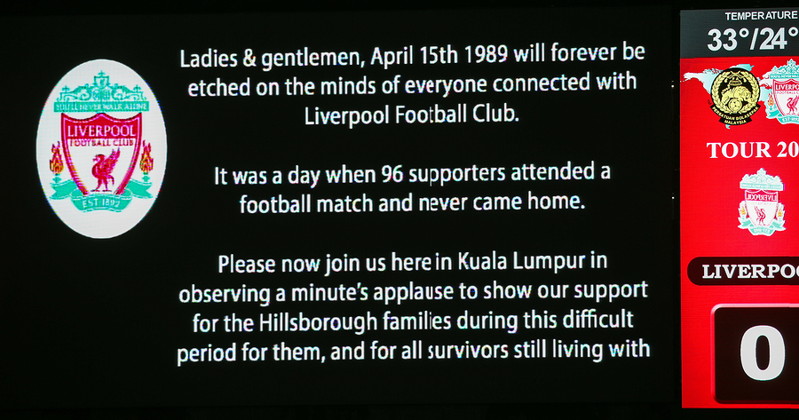
Perhaps no disaster in footballing history has been as influential over both a football club and the sport itself as the 1989 Hillsborough Disaster. It occurred at Hillsborough Stadium in Sheffield when Liverpool were playing Nottingham Forest in the FA Cup semi-final, when a series of police failures led to the deaths of 95 football fans, with a 96th dying in the years that followed. The tragedy would have been devastating enough, but the cover-up that followed compounded things, with the police and British government using the press to try to blame the innocent Liverpool supporters in attendance for what happened.
Consequently, the disaster didn’t just affect Liverpool supporters and the club but also the entirety of British football. In the years that followed an enquiry into the matter decided that all football stadiums in the top-end of the game should be all-seater from then on, which reverberates in the English game even today. As for Liverpool, Kenny Dalglish, the club’s manager at the time, decided that at least one footballer should be in attendance at every single funeral that took place. The club understandably didn’t focus on footballing matters in quite the same way that it would have done in a normal season. Here’s a look at the 8 results in all competitions that occurred before the disaster and the same number after (Information taken from lfchistory.net):
Before Hillsborough:
- Win v Luton Town
- Win v Brentford (FA Cup)
- Win v Coventry City
- Win v Tottenham Hotspur
- Win v Derby County
- Win v Norwich City
- Win v Sheffield Wednesday
- Win v Millwall
After Hillsborough:
- Draw v Everton
- Win v Nottingham Forest (FA Cup)
- Win v Nottingham Forest
- Win v Wimbledon
- Win v Queens Park Rangers
- Win v Everton (FA Cup)
- Win v West Ham
- Loss v Arsenal
It’s clear that Liverpool’s results after the disaster weren’t as good as those before, but the club still managed to pick up a number of important wins when most of the people of Liverpool probably didn’t want to be playing the games at all.
The loss to Arsenal on the final game of the season actually resulted in the Gunners winning the First Division title at Liverpool’s expense, but most people associated with the club won’t have felt the disappointment. It’s also noteworthy that the club won the FA Cup, beating their city neighbours in the final. It’s noteworthy because that’s the competition that the tragedy occurred in, so it will have felt important to the players to win it for the victims and their families.
Leicester City Owner Sudden Helicopter Death
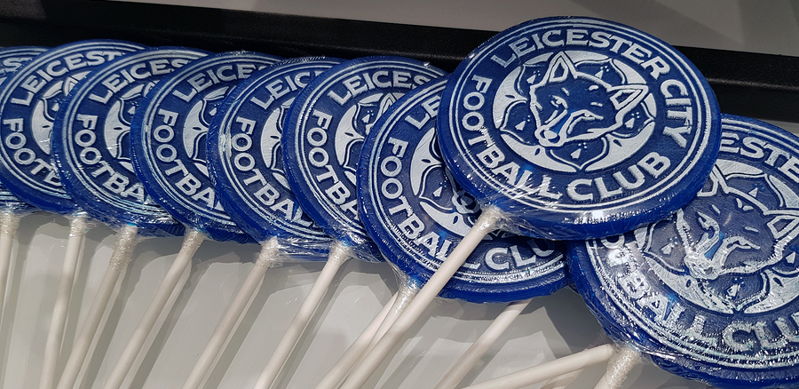
On the 27th of October 2018 an AgustaWestland AW169 took off from outside Leicester City Football Club’s home ground, the King Power Stadium. It was due to fly to Luton Airport but the helicopter crashed on take-off, killing all five passengers, one of whom was Vichai Srivaddhanaprabha, the club owner. Having overseen the club’s march to Premier League title glory in 2016, he was a popular owner that supporters believed had the club’s best interests at heart.
Vichai was commonly seen at Leicester’s games, often travelling by helicopter to the matches to the extent that it was a ‘common sight’ around the ground. He was in attendance to watch the Foxes play West Ham in a Premier League encounter, with the Hammers’ coach having already departed at the time of the crash. There were supporters of both teams still making their way out of the stadium but the helicopter managed to avoid all of them. A subsequent investigation revealed that a fault with the yaw rotor was the cause.
Once again, here’s a look at the results of Leicester City before and after the crash, this time looking at 10 fixtures either side (Information taken from lcfc.com):
Before Vichai’s Death:
- Win v Southampton
- Win v Fleetwood Town (EFL Cup)
- Loss v Liverpool
- Loss v Bournemouth
- Win v Huddersfield Town
- Win v Wolverhampton Wanderers (on penalties in EFL Cup)
- Win v Newcastle United
- Loss v Everton
- Loss v Arsenal
- Draw v West Ham United
After Vichai’s Death:
- Win v Cardiff City
- Draw v Burnley
- Draw v Brighton & Hove Albion
- Win v Southampton (on penalties in EFL Cup)
- Win v Watford
- Draw v Fulham
- Loss v Tottenham Hotspur
- Loss v Crystal Palace
- Loss v Manchester City (on penalties in EFL Cup)
- Win v Chelsea
The results stack up to see 5 wins, 4 losses and a draw before the helicopter crash and 4 wins, 3 losses and 3 draws after. Obviously the suggestion is that they performed worse in the wake of the accident, seeing as though there was one win fewer and two draws more, but it’s a close run thing.
It’s also important to take on board other factors. Claud Puel was sacked as manager on the 24th of February, suggesting that all was not well between the Leicester City players and the person in charge of the decision making. indeed, Brendan Rodgers took over as manager on the 26th of February and the Foxes only lost three more games all season.
Chapecoense Squad Perishes
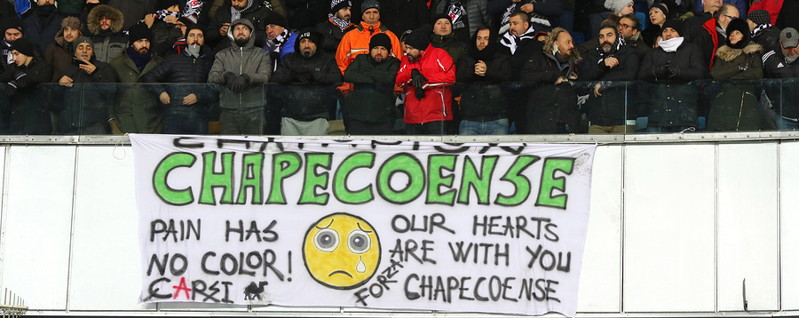
In terms of accidents that are likely to have affected a team’s ability to perform on the pitch, perhaps none are as all-consuming as what happened to the Chapecoense team on the 28th of November 2016. LaMia Flight 2933 was travelling from Santa Cruz de la Sierra in Bolivia, to Medellín in Colombia, where the club was supposed to take part in the Copa Sudamericana Finals.
Sadly the Avro RJ85 plane crashed close to Medellín, killing 71 of the 77 people on board. That included virtually all of the Brazilian team’s squad, with only 3 of the players that were on board surviving. Later investigations into the crash discovered that insufficient fuel combined with pilot error were the reason for the crash, with the pilot failing to announce an emergency when the fuel levels got low and failing to inform air traffic control at Medellín that he needed an emergency landing.
19 Chapecoense players as well as the coach died in the crash, as well as the Brazilian Football Confederation former vice-president and members of the media. Once again, here’s a look at the before and after results:
Before Plane Crash:
- Loss v Atlético Junior (Copa Sudamericana)
- Loss v Santos FC
- Win v Atlético Junior (Copa Sudamericana)
- Draw v Corinthians SP
- Draw v San Lorenzo (Copa Sudamericana)
- Win v Figueirense
- Win v Botafogo – RJ
- Win v São Paulo FC
- Draw v San Lorenzo (Copa Sudamericana)
- Loss v Palmeiras
After Plane Crash:
When it comes to the results after the disaster, things are slightly trickier. The team did not fulfil their matches against Atlético Nacional that should have taken place at the end of November and start of December, with the cup final being awarded to Chapecoense at the request of Atlético Nacional and with the backing of CONMEBOL. They also didn’t play their final league match against Atlético Mineiro.
As a result, Chapecoense didn’t play again until the following season, with the following being their 10 results once they did start playing football again:
- Win v Atlético Nacional (Recopa Sudamericana)
- Loss v Atlético Nacional (Recopa Sudamericana)
- Draw v Corinthians SP
- Win v Palmeiras
- Win v Avaí FC
- Win v Cruzeiro
- Loss v Grêmio Porto Alegre
- Loss v Ponte Preta
- Win v Vasco de Gama
- Loss v Botafogo – RJ
4 wins, 3 losses and 3 draws were achieved before the accident, 5 wins, 4 losses and 1 draw after it. That is suggestive if the side being better after the accident and it’s worth noting that they won the Santa Catarina state championship at the end of the 2017 campaign. That being said, they had also won it the year before and avoided relegation with 3 games to play.
The thing that makes the case of Chapecoense so different to the other examples we’ve looked at is that the club had an entirely different team from one campaign to the next. They bought 25 new players and promoted 9 players from within the youth team, after having been offered players by clubs from across Argentina and Brazil in the wake of the tragedy.
Emiliano Sala’s Death
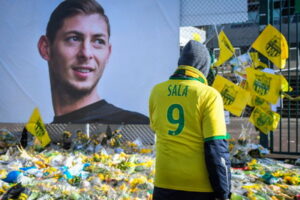 When it comes to tragedies affecting football teams, it’s usually the case that it is only one side that has to deal with the aftermath of something terrible happening. Yet in the 2018-2019 season the death of Emiliano Sala in a plane crash had consequences for two teams. An agreement had been reached between his club Nantes and the Premier League side Cardiff City for the player to move to Wales in a deal worth £15 million.
When it comes to tragedies affecting football teams, it’s usually the case that it is only one side that has to deal with the aftermath of something terrible happening. Yet in the 2018-2019 season the death of Emiliano Sala in a plane crash had consequences for two teams. An agreement had been reached between his club Nantes and the Premier League side Cardiff City for the player to move to Wales in a deal worth £15 million.
Sadly the move never materialised after his Piper Malibu light aircraft crashed just off Alderney on the 21st of January 2019. A search took place over the three days that followed but nothing could be found, with the craft’s wreckage and Sala’s body eventually being found by a private search on the 3rd and 7th of February respectively. The forward had made more than 100 league appearances for Nantes in Ligue 1, scoring 42 goals in the process.
Born in Cululú, Sante Fe, Argentina on the 31st of October 1990, Sala began his career in the Soledad B team in Spain before moving to France with Bordeaux. He then enjoyed numerous loan spells prior to getting his move to Nantes, where he established himself as a decent forward who knew where the back of the net was. That’s what eventually caught the eye of Cardiff City, who agreed a club record fee for his transfer in the hope that he’d be able to find the goals to keep them in the English top-flight.
You would suspect that the accident would have a greater effect on the buying club, given they were hoping he’d be able to change their fortunes whilst the selling club was already resigned to losing him, yet is that actually what happened? Here’s a look at the 10 matches before and after he went missing for both Nantes and Cardiff City:
Cardiff Before Sala’s Death:
- Loss v West Ham
- Win v Southampton
- Loss v Watford
- Loss v Manchester United
- Draw v Crystal Palace
- Win v Leicester City
- Loss v Tottenham Hotspur
- Loss v Gillingham (FA Cup)
- Draw v Huddersfield Town
- Loss v Newcastle United
Nantes Before Sala’s Death:
- Draw v Angers
- Loss v Saint-Étienne
- Win v Marseille
- Loss v Rennes (Coupe de la Ligue)
- Loss v Paris Saint-Germain
- Win v Châteauroux (Coupe de France)
- Win v Montpellier
- Loss v Rennes
- Loss v Nimes
- Loss v Angers
Cardiff After Sala’s Death:
- Loss v Arsenal
- Win v Bournemouth
- Win v Southampton
- Loss v Watford
- Loss v Everton
- Loss v Wolverhampton Wanderers
- Win v West Ham United
- Loss v Chelsea
- Loss v Manchester City
- Loss v Burnley
Nantes After Sala’s Death:
- Draw v Saint-Étienne
- Win v L’Entente SSG (Coupe de France)
- Win v Toulouse (Coupe de France)
- Loss v Nïmes
- Win v Caen
- Loss v Monaco
- Win v Bordeaux
- Draw v Guingamp
- Win v AS Vitré (Coupe de France)
- Loss v Reims
For Cardiff, then, there were 6 losses, 2 wins and 2 draws before the accident, then 7 losses and 3 wins after it. For Nantes, on the other hand, there were 6 losses, 3 wins and a draw before and 5 wins, 3 losses and 2 draws after it. That’s the equivalent of 8 points before and 9 after it for the Welsh side compared to 10 points before and 17 after for the French club (assigning 3 points for cup wins).
Just as with Leicester in the wake of Vichai Srivaddhanaprabha’s helicopter crash, so too are there external factors to bear in mind with Cardiff. We’re talking about a season in which they lost 24 games in the Premier League, so it’s not as if they were playing well away from the accident and the club’s form took a hit afterwards. Indeed, they only won 10 and drew the remaining 4 games, so their form was about what you might expect both before and accident the plane crash.
What might have had a bigger impact on both clubs was the unsavoury legal wrangling that took place in the wake of the player’s death of who owned him and whether Cardiff City should pay the fee for his transfer to Nantes. Cardiff felt that he was not their player as they had not received international clearance for him to play and the contract that he’d signed with them had been rejected by the Premier League because it contravened the rules surrounding signing on fees.
Nantes, for their part, felt that they had completed all the necessary paperwork to ensure that Emiliano Sala could transfer to Cardiff and that any problems in the move were at Cardiff’s end and therefore not their problem. In the end the matter had to go to FIFA to make the deciding factor, but it was an ongoing saga as the season came to its climax for both clubs and was likely to have had more of an impact on their successes, or lack thereof, than the player’s death alone.
What Does This Tell Us About Team Performance?
 The truth is there doesn’t seem to be any clear-cut answer to how a tragedy tends to affect a team. In all three cases the results are slightly worse after the tragedy, but it’s marginal and you’d be hard pushed to say that there’s anything definitive within the data we’ve got available to us.
The truth is there doesn’t seem to be any clear-cut answer to how a tragedy tends to affect a team. In all three cases the results are slightly worse after the tragedy, but it’s marginal and you’d be hard pushed to say that there’s anything definitive within the data we’ve got available to us.
Perhaps long-term trends are something that it might be worth coming back to look at, but even that is far from able to tell us anything for certain. In 1990 Liverpool won the title again, for example, which is suggestive of the club being back to its best in the wake of Hillsborough. Yet it then went on a dry spell for a number of decades as far as the top-flight title was concerned, so was that down to the effects of the tragedy?
In reality it probably says more about the way the club was run at the time, with numerous ownership problems besetting Liverpool for years after. Perhaps tragedies bring clubs together, forcing them to confront the horror of their situation and causing a desire to pull in the same direction in order to honour those that were lost because of what happened. It’s difficult to tell for sure, but let’s hope that there are far fewer samples to look at moving forward.